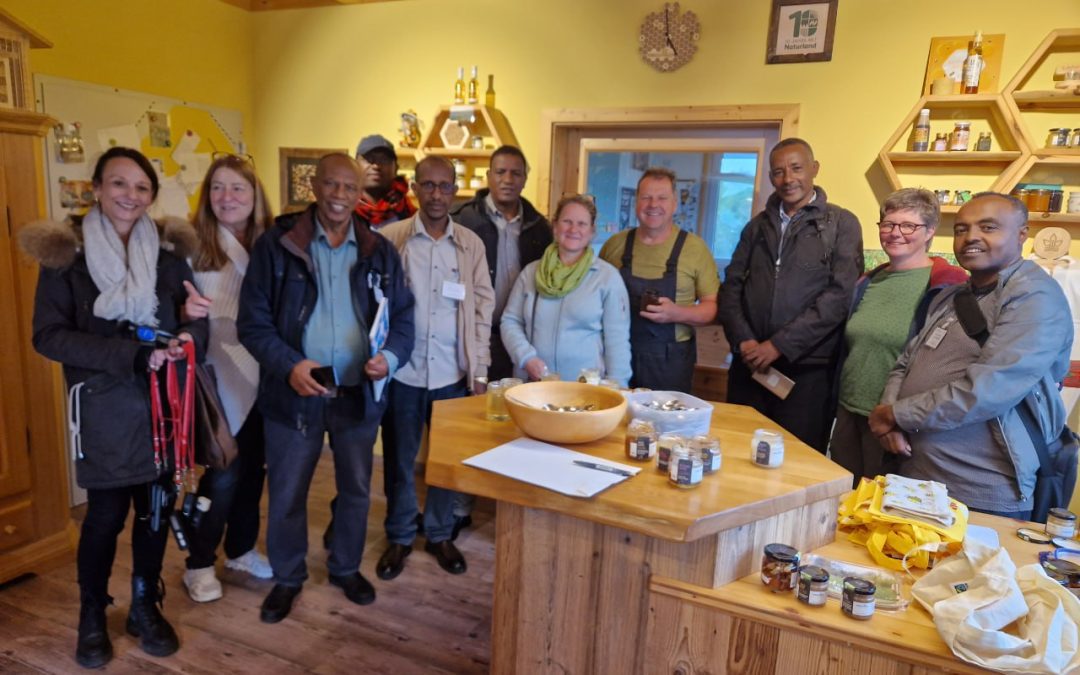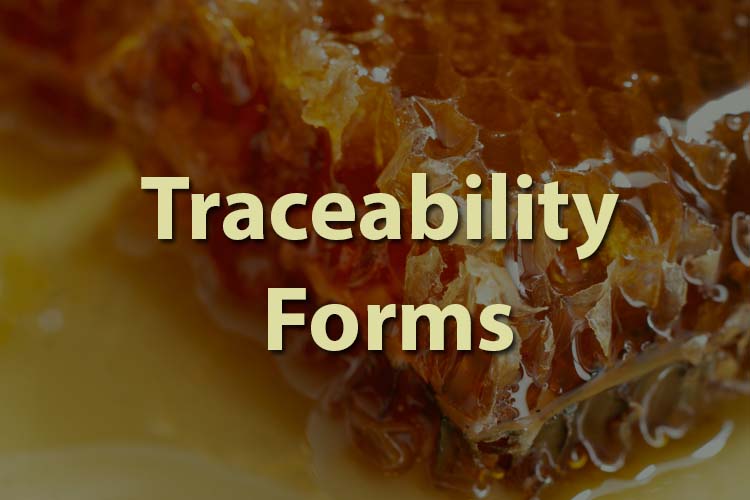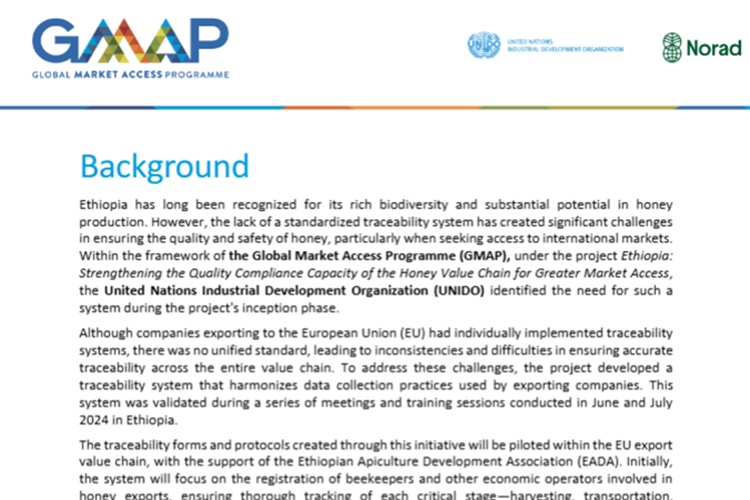Green Legacy and Apiculture by Dr. Admasu
Contribution of Green legacy initiatives for biodiversity conservation and Apiculture development
Admassu Addi , Holeta Apiculture Research Center
Introduction
Even though Ethiopian forests are significantly contributing to the national economy and the climatic regulation of the country but, most of them are highly degraded. The green legacy initiative of the country is designed to address the challenges of forest degradation and way of improving soil health, restoring degraded lands and enhancing biodiversity. The green legacy initiative is golden opportunities for promoting beekeeping since tree planting encourages beekeeping activities. Beekeepers are quite aware of planting and preserving bee forage in a sustainable way (Nshama, 2003). By increasing the bee forage diversity as part of green initiatives program provide essential habitats and food sources for honeybees and wild pollinators.
Beekeeping is an excellent tool for increasing forest conservation and engaging people in protection and preservation forest resource through honey production and other bee products which offer a wide range of health benefits to human and income generation. Study conducted in central Ethiopia showed that majorities of beekeepers grow and conserve bee forage plants for their honeybees, resulting in greater plant diversity than that of non-beekeepers (Debissa et al. 2009). Another study conducted in Menegasha Sub Forest found that integrating beekeeping technology with forest conservation boosted honey production by fourfold (411%) and revenue by 5.76 times (576%) and promotes the growing of bee forages which substantially contribute to the management of forests (Admassu et al. 2014).
Beekeeping contributes to watershed management by enhancing biodiversity through, pollination services of honeybees that contributes to preserving the delicate balance of local ecosystems (Gemeda, et al. 2014). Beekeeping contributes for promoting the development of community- based natural resource management practice since watershed pay for itself by generating sustainable economic benefits to surrounding community (Yusuf et al 2018). This approach not only benefits the environment and it improves farmers’ livelihoods by introducing improved beekeeping technologies as incentive to watershed conservation through high quantity and
quality honey production.
The green legacy initiative also played a significant role in pollinator conservation, which directly affects crop yields. By increasing the diversity and density of flora which can provide habitats and food sources for pollinators including honeybees which can perform efficient
pollination services. Honeybees are crucial pollinators for many plants and improve agricultural yields and contribute to more sustainable land use practices, which ultimately protect the entire Ecosystem (James and Pitts-Singer2008). Pollination by honeybees enhances global crop output by an additional USD 235–577 billion annually (Potts et al., 2016). Out of the 53 major agricultural crops cultivated in Ethiopia, 33 of them (62.2%) are dependent on biological pollinators. The economic value of pollination services in Ethiopia has been estimated at USD 814.6 million in the 2015/16 production season (Alebachew, 2018). Accordingly Niger, onion, Apple, and Faba bean seeds and fruit yields have been reported (Tura and Admassu 2019) showing that honeybee pollination plays a great role in the Ethiopian crop production. The effect of honeybees as pollinator on Niger seed yield, oil content and germination capacity were tested by many authors. Accordingly, seed yield increment ranging from 43-80% for red onion (Allium cepa) and Guizotia abyssinica.
References
Admassu, A., W. Kibebew, and B. Tura, (2014). Case study on contribution of beekeeping to the income
generation of the households bordering Menagesha Suba State Forest
Alebachew, G. W. (2018) .Economic value of pollination service of agricultural crops in Ethiopia: biological pollinators. Journal of apicultural science,. 62(2): p. 265-273
CSA, (2021). Central Stastical Agency agricultural sample survey 2020/21 (2013 E.C.) Volume II
Gratzer, K., et al., (2021). Challenges and perspectives for beekeeping in Ethiopia. A review. Agronomy for Sustainable Development.
Debissa Lemessa, (2006). The roles of apiculture in vegetation characterization and household
livelihoods in Walmara District, central Ethiopia.
Gemeda, T.(2014). Integrating improved beekeeping as economic incentive to community watershed management: the case of Sasiga and Sagure Districts in Oromiya Region, Ethiopia.
James, R. R. and T. L. Pitts-Singer (2008). Bee pollination in agricultural ecosystems. Oxford University
Press.
Tura and Admassu (2019). Effect of honeybee pollination on seed and fruit yield of agricultural crops in Ethiopia.
Tura et al (2021). Beekeeping as an incentive to catchment rehabilitation.
WCMC (1994). Biodiversity Data Sourcebook. World Conservation Monitoring Centre, World Conservation Press, Cambridge, UK.
Yusuf, S., E. Cishe, and N. Skenjana (2018).Beekeeping and crop farming integration for sustaining beekeeping cooperative societies








